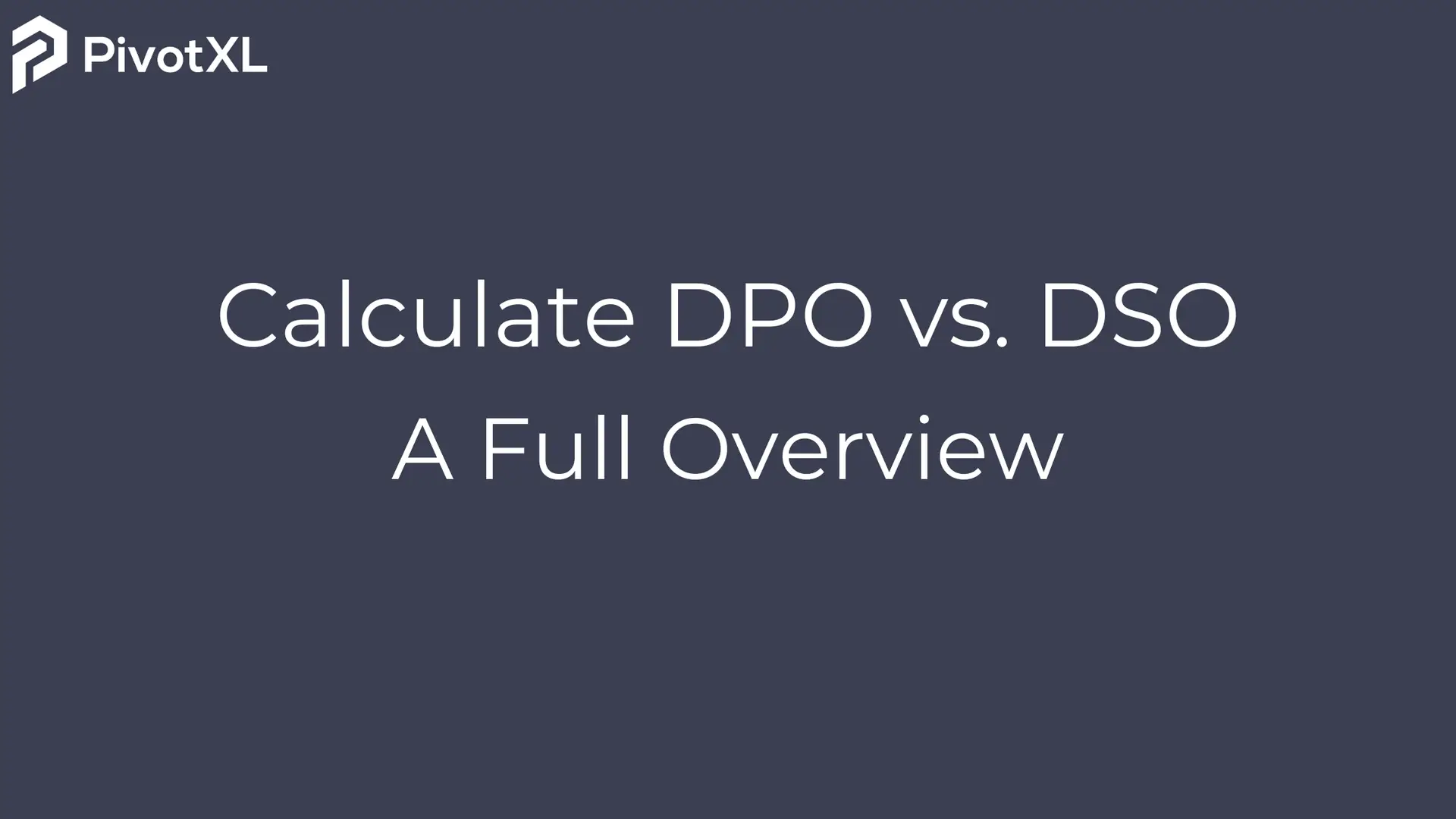Days Payable Outstanding (DPO) and Days Sales Outstanding (DSO) are critical metrics that help businesses assess their financial health and operational efficiency. Understanding how to calculate DPO is especially important for optimizing cash flow and maintaining strong supplier relationships. These metrics, also known as activity or efficiency metrics, show how effectively your company utilizes resources on its balance sheet. Let’s break down these concepts and how they work together to provide a clearer picture of your company’s cash flow.
What Is Days Payable Outstanding and How to claculate DPO
DPO measures the average number of days a company takes to pay its suppliers. It provides insights into cash liquidity, financial health, and how effectively the company manages its obligations. Knowing how to calculate DPO helps businesses strike the right balance between timely payments and optimal cash utilization.
A high DPO can be advantageous, as it indicates the company is optimizing its cash by utilizing credit terms. However, excessively high DPO may suggest delays in payments, which can strain supplier relationships. Companies typically calculate DPO on a quarterly or annual basis to evaluate their performance.
What Is Days Sales Outstanding (DSO)?
DSO calculates how many days it takes for a company to collect payments owed by its customers. It is a key indicator of how efficiently a business manages its receivables.
A lower DSO is generally desirable, reflecting prompt payments and healthy cash flow. However, extremely low DSO may indicate aggressive collection practices that could harm customer relationships. Balancing customer payment terms and cash flow optimization is key.
DPO vs. DSO: Key Differences
- DPO reflects cash outflows to suppliers, measuring payment efficiency.
- DSO tracks cash inflows from customers, assessing collection efficiency.
Together, DPO and DSO provide a comprehensive view of your company’s financial performance and cash flow management.
Is DSO the Same as Days Receivable Outstanding (DRO)?
Yes, DSO and DRO are often used interchangeably. Other terms include Days Billing Outstanding (DBO).
Is DPO the Same as Days Inventory Outstanding (DIO)?
No. While both are efficiency metrics, they measure different aspects:
- DPO assesses how long a company takes to pay suppliers.
- DIO calculates the average number of days inventory is held before being sold.
What Is the Cash Conversion Cycle (CCC)?
The Cash Conversion Cycle measures the time it takes for a company to turn investments in inventory and other resources into cash from sales. It combines:
- Time to purchase and receive inventory.
- Time inventory remains in stock before sale.
- Time to collect payment from customers post-sale.
The CCC is a vital indicator of operational efficiency.
How to Calculate DPO
To calculate DPO:
DPO = (Accounts Payable × Number of Days) ÷ Cost of Goods Sold (COGS)
- Accounts Payable: Found on the balance sheet.
- COGS: Found under “Cost of Sales” or “Cost of Goods Sold” on the income statement.
- Number of Days: Typically 365 for annual calculations.
How to Calculate DSO
To calculate DSO:
DSO = (Accounts Receivable × Number of Days) ÷ Total Credit Sales
- Accounts Receivable: Found on the balance sheet.
- Total Credit Sales: Sales made on credit during the calculation period.
- Number of Days: Typically 365 for annual calculations.
Examples of Healthy DPO and DSO
While benchmarks vary by industry, these general guidelines can help:
- A 45-day DSO indicates customers pay within 30-60 days of invoicing, suggesting healthy repayment terms.
- A well-balanced DPO ensures payments are made on time while optimizing cash utilization.
Improving Your DPO and DSO Metrics
If your DPO or DSO numbers aren’t ideal, here are actionable strategies to improve:
Improving DPO
- Determine Current DPO: Start by calculating your current DPO using the formula above.
- Slow Payment Time: Pay suppliers closer to the due date within agreed terms.
- Strategically Time Payments: Make payments after the accounting period’s close to adjust averages.
- Negotiate Better Terms: Request longer payment terms from suppliers.
- Reduce COGS:
- Leverage bulk discounts.
- Source less expensive materials.
- Streamline manufacturing processes.
Improving DSO
- Refine Payment Terms: Shorten payment windows (e.g., from 60 days to 30 days).
- Offer Early Payment Discounts: Encourage faster payments with small discounts.
- Streamline Invoice Submission: Send invoices promptly, preferably electronically.
- Automate Accounts Receivable: Use technology to accelerate invoice processing and payment tracking.
- Consider Factoring: Sell default accounts to factoring companies to improve cash flow.
Conclusion: Monitor Metrics with PivotXL
Efficiently managing DPO, DSO, and other financial metrics is essential for maintaining cash flow and operational efficiency. Knowing how to calculate DPO and DSO is just the start. With PivotXL, you can centralize your data, track performance, and make data-informed decisions to drive your business forward. PivotXL’s integration with existing workflows ensures that your team has the tools it needs to optimize financial performance without added complexity.
Start optimizing your financial metrics with PivotXL today!




